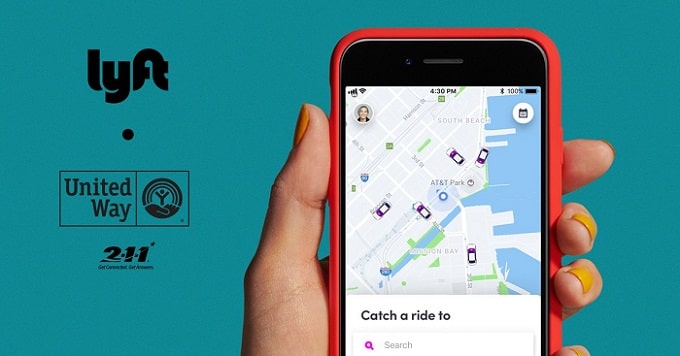Table of Content
The way people travel and commute has changed since the rise of ridesharing apps.
When it comes to going from one place to another on demand, what we all say: “Let’s Uber” or “I’ll Call a Lyft”. Isn’t it right? Being able to get a ride at the doorstep with the click of a button has become much more accessible and desirable.
Thus, it’s no surprise to see the industry growing at an impressive rate.
In 2020, the global ridesharing market was worth $59.53 billion and it’s anticipated to clock $205.83 billion by 2030, at a CAGR of 13.2% from 2021 to 2030.
If you’re planning to capitalize on the industry, it’s a must to take a peek at the leading ridesharing apps in the world to learn their strategies to become successful.
So, here’s the post that highlights the top 11 best rideshare apps along with some helpful insights about them.
The 11 Best Rideshare Apps of 2023
Without further ado, let’s now explore some of the best rideshare apps with key details, stats and facts about them as per findings by Business of Apps and other sources.
1. Uber: The Global Leader in Ridesharing

Based in San Francisco, Uber is an on-demand ridesharing company that disrupted the global transportation industry in 2009 by empowering people to get a ride at their doorsteps in minutes with the tap of a button.
Today, Uber dominates the ridesharing market in the USA with a 71% market share. On top of all, it is one of a few tech companies in the world with a valuation of $70 Billion.
After all, Uber has not limited itself to just ride-hailing with multiple ride options. It also offers food delivery, package delivery, freight transportation and more services.
As its business model turned out to be pretty successful, it further accelerated the on-demand economy across the different industries. As a result, many startups started portraying their offerings as “Uber for X”.
Key Facts:
- Number of Users: 118 million riders as of 2021
- Number of Drivers: 5+ million
- Revenue: $18.3 billion as of 2021
- Availability: 72 countries & 10,500 cities
- Rating: Android (3.8) & iOS (4.3)
Benefits to Riders:
- Multiple ride options with live tracking
- Allows scheduling a ride in advance
- Multiple payment options including cashless (in some regions)
- Allows adding multiple drop-off locations while traveling in a group
- Safety and on-demand door-to-door convenience
- Uber Assist service (available in certain regions) for riders with disabilities)
Benefits to Drivers:
- Flexible working hours
- Easy and fast payment procedure
- Assistance in finding the best health insurance policy and financial management
- Special features included in the app for hearing-impaired drivers
2. LYFT: Your Friend with a Car

Like Uber, Lyft is also a San Francisco-based ridesharing company founded in 2012. It is also a multimodal platform that provides ride-hailing services with multiple ride options including bikes & scooters, Lyft, Lyft XL, Lyft Lux, Wait & Save and more.
After Uber, Lyft is the second-largest peer-to-peer ridesharing service provider in the USA with an acquisition of a 32% market share.
It’s different from Uber in the way it brands itself. Uber – “Your Own Personal Driver” – strives to offer a more professional and corporate feel. On the other hand, Lyft – Your Friend with a Car” – strives to offer a more casual feel.
Key Facts:
- Number of Users: 12.5 million riders as of 2020
- Number of Drivers: 2+ million
- Revenue: $2.3 billion as of 2020
- Availability: United States (644 cities) & Canada (12 cities)
- Rating: Android (3.8) & iOS (4.9)
Benefits to Riders:
- Ensures minimum waiting time
- A feeling of great comfort and safety
- Multiple economical ride options
- On-demand door-to-door service
Benefits to Drivers:
- Flexible working hours
- Quick payout procedure
- Support via different programs
Business and Revenue Model
The Lyft business model entails several ways to yield revenue; which include commission on every ride, surge pricing, subscription service for riders and more.
3. Grab: The Southeast Asia Ridesharing App

Founded in 2012, Grab is more than just a ridesharing app. It is Southeast Asia’s leading super app that provides many services ranging from ride-hailing to food delivery and financial services under one umbrella via its mobile app.
On top of all, Grab beat Uber in Southeast Asia as the top ridesharing app with a valuation of more than $10 Billion.
Key Facts:
- Number of Users: 187 million
- Number of Drivers: 2.8 million
- Revenue: $16 billion (Source)
- Availability: 8 countries and 400 cities
- Rating: Android (4.7) & iOS (4.8)
Benefits to Riders:
- Multiple payment options for convenience
- Upfront pricing
- Live tracking
- Multiple on-demand ride options including kid-friendly
Benefits to Drivers:
- A dedicated app
- Flexibility
- Easy payment system
Business and Revenue Model
When it comes to ridesharing, the Grab business and revenue model mainly revolved around charging a commission on every ride.
4. Ola: Uber’s Biggest Rival in India
Ola is an Indian-based ride-hailing company with a presence in more than 250 cities across India, New Zealand, Australia, and the UK.
As Uber’s primary competition in India, Ola is popular for offering a wide range of travel options from economical to luxury with different prices. Like Uber, it enables users to rent a car and book a cab in advance.
To offer a seamless cashless experience to users, Ola has launched an “OlaMoney Postpaid” – which is a digital credit payment. It empowers customers to pay for their expenses all at once with the click of a button every 15 days.
Key Facts
- Number of Users: 200 million
- Number of Drivers: 2.5 million
- Revenue: $330 million
- Availability: 4 countries and 250+ cities
- Rating: Android (4.0) & iOS (4.7)
Benefits to Riders:
- Multiple ride options
- Access to certified drivers, which ensures safety
- Allows scheduling rides in advance
- Multiple payment options including cashless
- In-cab entertainment (music and videos)
Benefits to Drivers:
- Flexible working hours
- 24/7 support
- Option to get a car on lease with benefits like free maintenance
- Daily payments
5. Careem: Uber’s Biggest Competitor in the Middle East
Careem, a Dubai-based on-demand ridesharing service that took the Middle East by storm within a few years of its launch, is Uber’s biggest competition in the region.
Today, it has evolved from a Middle East ridesharing app into the region’s super app that provides a diverse range of services such as grocery shopping, food delivery, bike rentals and much more under one roof.
What’s more? Careem is an award-winning app that has bagged many awards: Most Innovated App, Best Transport Service Online and Best Digital Customer Service Team.
In 2019, Uber acquired Careen for $3.1 billion. Though Uber has complete ownership, both companies work independently.
Key Facts
- Number of Users: 48 million
- Number of Drivers: 1 million
- Availability: 15 countries and 100+ cities
- Rating: Android (4.1) & iOS (4.6)
Benefits to Riders:
- Meet everyday needs – book a ride, online food ordering and more.
- Great rewards
- Cashless payment system (Careem Pay)
Benefits to Drivers:
- Work flexibility
- A dedicated app for drivers
- Excellent support
6. GoJek: More Than Just a Rideshare
Like Grab and Careem, GoJek is more than just one of the best rideshare apps. With a current valuation of $10 billion, it is Southeast Asia’s leading super app that provides over 20 services ranging from transport, food delivery, logistics to entertainment and much more.
It has a presence across five countries including Indonesia, Singapore, Vietnam, Thailand and Philippines.
With a valuation of $10 billion, GoJek is Indosensia’s first decacorn.
Key Facts
- Number of Users: 38 million users in Southeast Asia
- Number of Drivers: 2 million
- Availability: 5 countries
- Rating: Android (4.3) & iOS (4.2)
Benefits to Riders:
- Multiple payment options
- A range of services under one umbrella
- Multiple ride options for convenience
Benefits to Drivers:
- Access to special discounts on grocery, fuel and more
- Health insurance to drivers and their dear ones at an affordable premium
- Access to free training in a variety of subjects such as English
- Life insurance
7. Via: The Affordable Ridesharing App
Via is a New-York based ridesharing app that connects riders with a vehicle headed in their direction. It has formed alliances with many local firms to offer its services in over 20 countries around the world including the UK, USA, Singapore, and more.
Like most other ridesharing apps covered here, it works around the clock – 24/7 and is ideal for carpooling.
Key Facts
- Revenue: $1 billion
- Availability: 20+ countries
- Rating: Android (3.7) & iOS (4.3)
Benefits to Riders:
- Affordable rides
- Corner-to-corner pickup service for convenience
- Multiple payment options
Benefits to Drivers:
- 24/7 customer support
- Flexibility to make money
- Option to rent a vehicle at a low price
- A dedicated app
- Great cash bonus upon referring new drivers
8. BlaBla Car: Share Your Ride
BlaBla Car is a French-based ridesharing app with a business model pretty different from others. It empowers people who want to travel together and split the fare of the journey. The way the app works is straightforward.
As a driver, you can list your vehicle on the app and specify your route to start receiving bookings.
As a rider, on the other hand, you can identify your desired ride and request for it to share the expenses.
Key Facts
- Number of Users: 87 million
- Availability: 22 countries
- Rating: Android (4.3) & iOS (4.6)
Benefits to Riders:
- Affordability
- “Ladies Only” option for women’s safety
Benefits to Drivers:
- 24/7 customer support
- An easy way to post a ride
- An option to accept or reject ride requests
9. Hitch: Shared Ride between Two Cities
Hitch is amongst our list of best rideshare apps that has made traveling between cities easy and affordable. It connects riders and drivers heading to the same city.
It allows booking a ride between 7 AM and 7 PM and confirms the ride within 2 hours. This eliminates the hassle of pre-booking by offering same-day bookings. At present, it is available in the USA alone.
Key Facts
- Availability: USA (Texas & Oklahoma and Florida)
- Rating: Android (3.4) & iOS (4.6)
Benefits to Riders:
- Affordable than a bus ride
- Availability of same-day and advanced booking
- Background checked drivers
Benefits to Drivers:
- Earn up to $130 for a round-trip
- Complete transparency
- Convenient pick-ups and drop-offs
10. Curb: Request & Pay for Rides with the Tap of a Button
Curb is a leading rideshare app in the USA that connects users to more than 50, 000 taxis and book rides in 65 U.S. cities.
At the core, Curb works quite similar to how Uber and Lyft work. However, this rideshare app even lets users schedule picks in advance in some cities for a $2 fee. The uniqueness of the app is upfront pricing i.e., the price the rider sees is the price he/she pays.
Key Facts
- Availability: USA
- Rating: Android (3.0) & iOS (4.8)
Benefits to Riders:
- Upfront and transparent pricing
- Enable booking rides in advance
- Convenient and fast with contactless payment
Benefits to Drivers:
- Flexible working schedule
- Allow tracking earnings in real time
- 24/7 support
11. Bridj: On-Demand Rideshare for Large Groups
Bridj is an Australia-based on-demand rideshare service intended for moving a large squad of people for a family trip, big event, road trip or others.
As compared to a taxi, each ride through Bridj is quite affordable and typically a similar price to conventional public transport. When riding on Bridj, riders are always guaranteed a comfortable seat and Wi-Fi access.
Key Facts
- Availability: Sydney and Adelaide, Australia
- Rating: Android (3.4) & iOS (3.6)
Benefits to Riders:
- Allow making payments via credit cards
- Access to facilities such as USB charging and free Wi-Fi
- Special service for disabled riders
Benefits to Drivers:
- Provides access to a tablet for tracking passenger bookings
- A dedicated app
- Professional training by the Bridj team
Interested in Building Your Own Ridesharing App?
When you’re ready to launch your own ridesharing app, InfoStride is here to help by providing you access to vetted developers who can make your idea a successful reality.
With a full-scale team of 250+ developers specializing in different domains and technologies, we can help you hire a solo developer or complete development team for your project with the following benefits:
- Access to only pre-screened tech experts – UI/UX designers, frontend developers, backend developers, IT consultants, business analysts and more.
- Flexible engagement models – you can hire our developers on an hourly, monthly or project basis as your project requirements demand.
- Full administrative support – from onboarding to payroll and compliance, we take on every responsibility to let you focus on building amazing things.
Interested? Share your requirements to get started!
Conclusion
Ridesharing apps like Uber, Lyft and Grab have become an indispensable part of people’s lives. The success of these best rideshare apps can be attributed to the benefits it provides not just to users but also to drivers.
If you too want to enter this industry and build an app like Uber and Lyft, it’s a must to offer something better than existing ridesharing apps to gain traction for your business.
Some Hand-Picked Articles for You:
Top Online Medicine Delivery Apps That Are Worth Your Attention
Top Gaming Chat Apps and How They are Generating Millions in Revenue
Trending Startup App Ideas You Can Launch This Year
THE AUTHOR
harish6854





